Del Parson

I know it’s a long story, but the first question I wanted to ask was how you got started painting.
First off, my father was an artist. So I was around art, you know, forever. Then when I started college, originally I wanted to go into life science because I really love nature and wanted to maybe go off and be a game warden or something, or work for the forest service. But I started taking art classes, and I enjoyed that more and I did better in the art classes than anything else.
And then when I was a little older—late twenties—I had a patriarchal blessing and that confirmed that’s what I was going to do. After that, I just said, “That’s what I’m going to do.”
For quite a bit of my career, most of my work was not religious. In fact, a very small percentage was religious. It was mostly paintings for galleries—westerns, landscapes, portraits—and they were not religious at all.
I always wanted to do paintings for the Church, and so I did a few paintings for the Ensign every once in a while. Then I was commissioned to do paintings of the Savior. It took a long time before most of my work was religious. And now I think, well, if I’m going to paint something, I want to paint something that’s meaningful to me, and a religious painting’s more meaningful than something else.
Also, about fifteen years ago a printing company said, “Would you do some religious paintings for prints?” And then I started doing that.
When you start doing prints and people see a lot of them, then that’s kind of what you’re known for. And so you start doing it, and then somebody says, “Gosh, I really like that print—would you do a painting for me of this?” I don’t mind it. Sometimes the hardest part of being an artist is thinking of an idea to paint, and if you paint the Savior numerous times, after a while it’s kind of difficult to think of something that would be exciting and interesting to somebody else. Right now I’ve got some down time, just thinking about what I want to paint, getting some ideas and putting things together. That’s the most difficult thing for me. I started thinking of it this way: “Well, I’ve done six of those…”
I was actually going to ask you about that—when you’re painting the same subject matter, what keeps it fresh for you?
Right, that’s the hardest thing. It’s difficult. Every once in a while you come up with an idea that you just have to do, and that’s wonderful. But that doesn’t happen all the time. And that’s what I’m doing right now—I’m actually watching the Church videos, the ones that were just made in Goshen, and I’m watching them just to get ideas, to think about what would be a great painting.
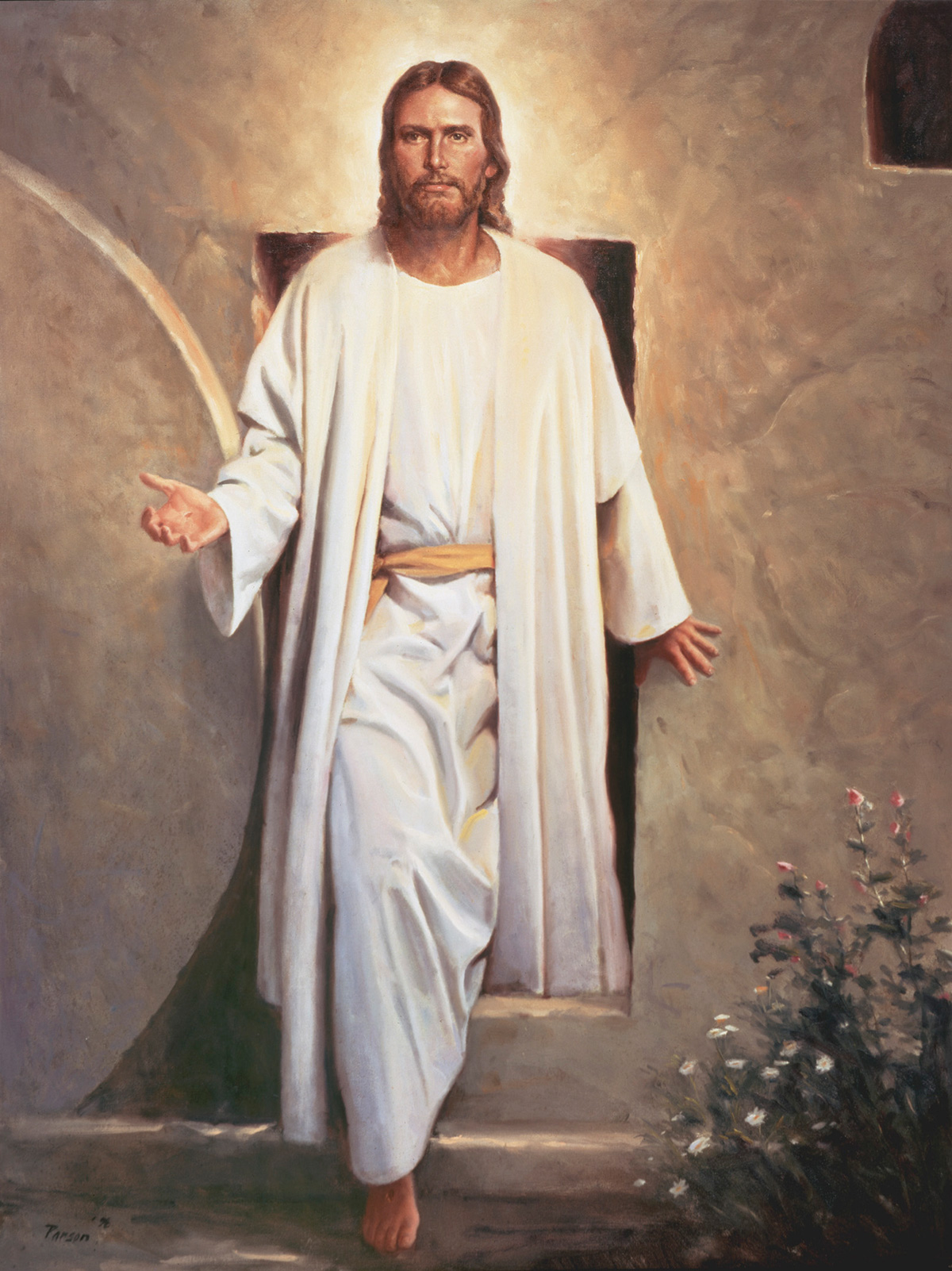
You’ve said that when you’re depicting Jesus Christ, you’re not necessarily painting a person so much as an idea. What kind of ideas go into painting Christ?
First, the love of Christ. In a way, you are painting a person too, but you have something in your mind that says, “This is Jesus.” And you’re painting on it and you say, “This doesn’t feel like Jesus.” It could be something in his look, something in his expression, the way the light is—you don’t have a lot of possibilities. But you just know if it feels and looks like Jesus.
Where does that come from? You have an idea in your mind of what Jesus looks like, right? And if the picture you’re doing doesn’t look like him, if it doesn’t look like what you feel he would look like, even if it’s a really cool picture, you don’t like it. You say, “Something’s wrong here. I just don’t like it.”
So as an artist you’re working on it and sometimes you’re saying, “Is the mouth too big? Is the nose too long, or is it too short?” And then you work on that until it feels most like Jesus.
You mentioned your patriarchal blessing and how it talks about art. In the BYUtv documentary, you said that that gave you a sense of a calling and a sense of confidence—“Well, Heavenly Father wants me to be an artist, so I can’t fail”—but it also gave you a sense of responsibility. Calling, sense of responsibility, sense of confidence—were there any times that you doubted any of those things? And what did you do about it if so?
I don’t think I did. I think I sometimes felt like I didn’t work hard enough, like I didn’t do what I needed to do to get it done.
I think the other thing is I try to do the right thing as far as keeping the commandments. I’ve actually been very grateful for that in my life, that I’ve kind of felt like if I’m going to do a painting this week, I better be really careful what I think and what I say and what I do.
I’ve just enjoyed painting the Savior, and he’s my hero, and so if I do a decent job, that’s great.
What are some of the difficult things about being an artist? You mentioned getting ideas—what are some other things that have been challenging?
The solitary, hermit kind of life. You’re all by yourself. Sometimes you say, “The last place I want to go is in my studio and paint,” but you just do it. If you don’t do it, the work won’t get done. You can have all kinds of wants and everything, but unless you put in the time and do it, it won’t happen. A lot of times that’s the very last place I want to go. I’d rather go fishing or hunting or skiing or hang out, watch TV, whatever. But I just say, “This is what I’ve got to do, and if I don’t do it, it’s not going to happen.” So I just do it.
I think that’s the way it is with everybody if they want to accomplish something—they just have to do it. And sometimes people do it and sometimes they don’t.
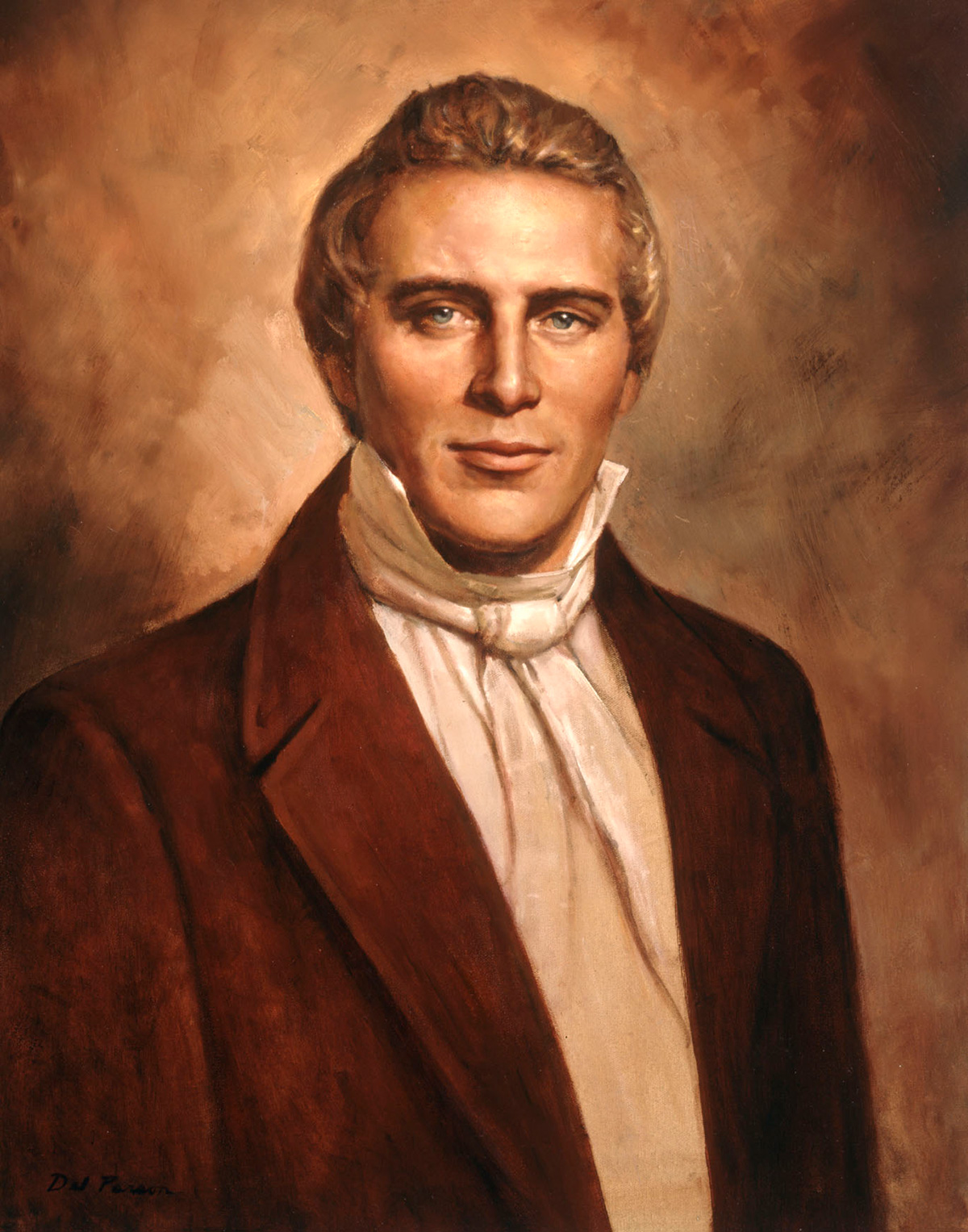
I know you’ve talked a lot about this, but I wanted to hear the story behind the Red Robe Christ painting, since it’s so iconic in Mormonism.
For me, the really important part is that I had a wife and daughter killed in a car accident. The only reason I say that is that when I did that painting, it was after the accident, and at that particular time in my life I was about the most teachable, humble person, and I don’t think you can dismiss that.
Then the Church asked me to paint three paintings of the Savior. It was so they could have things to reproduce for publishing, so if they needed an image, they’d have an image. One was washing the feet, one was knocking on the door, and the other one was a painting of a portrait.
And so they asked me to do that, and I met with a group of designers and general authorities—it wasn’t the First Presidency or anything—and we talked about what they would like in these paintings. I guess it would probably be called the correlation committee. What they said was, “We want a strong Mormon image of the Savior, a more masculine image.”
After that, I started going through a sketch process. I’d do a sketch and send it to the Church. I don’t know for sure who saw those sketches—I really don’t—but I sent them to an art director, Warren Luch. He would take that sketch to different people and they would write comments and send them back. I went through at least five sketches. It’s been twenty years or more, so it’s hard for me to remember exactly.
But you know, sometimes I’d get discouraged. I’d do a sketch and they’d write, “No, don’t like that one.” You know what I mean? It’s not easy. You go out there and you do the best you can.
I sent a sketch to the Church. One night I had a dream that somebody was talking to me and they said, “In the morning, the Church is going to call you and tell you that that sketch isn’t going to work, but don’t worry about it because everything will work out just fine.” Then in the morning, Warren called me and said, “Your sketch isn’t going to work. Give us another sketch.” So I was ready to do another sketch, but the sketch came back in the mail about three or four days later, and there was a letter with it saying, “Don’t worry about doing another sketch. Develop this one into a painting, but do these things—more intensity, more love, older looking, more Jewish-looking, no forked beard, wider shoulders.” Just things like that. And then I painted the painting and submitted it to the Church.
I don’t know for sure who saw it when it was accepted. I do know that if it’s a painting of the Savior, it has to be approved by the First Presidency. And that’s all I really know about what happened there.
The only other thing that happened was after that, this Warren Luch called and said, “Would you mind signing some prints that we’re making for the general authorities of the Church? We’re going to give every one of them a picture of this painting. Would you mind signing them?” I said, “Sure,” and then that was kind of it. But nobody called. I’ve heard all kinds of interesting stories about it, but no one ever said something like, “Oh, you nailed it,” or anything. But it got approved.
I really feel like I was inspired on it and got some help. I felt like I was really trying my very best to go by the Spirit.
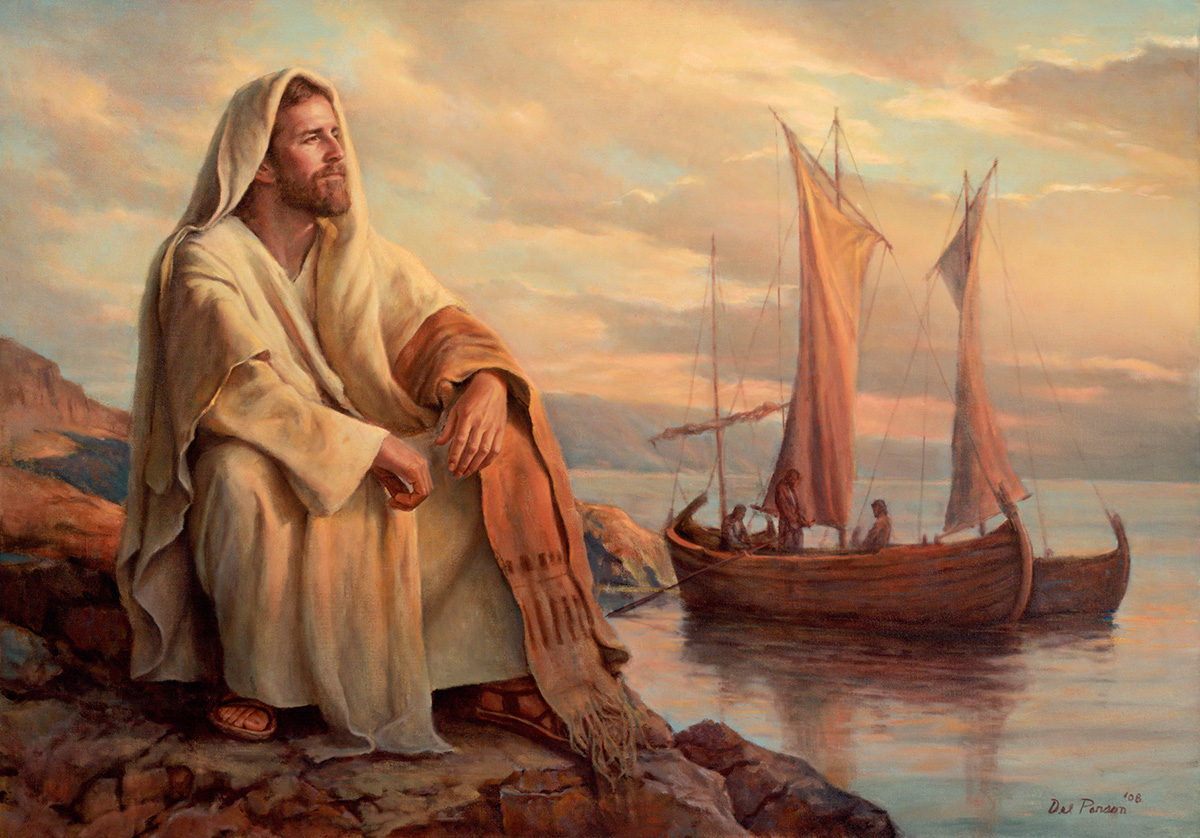
Let’s talk about some of the other paintings you’ve done for the Church. The First Vision has an interesting story too. Can you tell us a little bit about it?
When I was asked to do that, I remember there was some reluctance about the depiction of the Father, some apprehension from the people I was talking to. It was probably the correlation committee, but it’s been too long to remember exactly. But I’d gone through some paintings where I did sketch after sketch after sketch, and I just wouldn’t get anywhere. And so I asked if they could do a sketch first. That didn’t really go well. I think the whole problem was, because it’s such a sacred thing, there was concern about not making it look good. You know—the Father, which is a serious depiction.
Anyway, I did a drawing, and then they had me do a little painting, and then I did a big painting. Then it was approved by the Relief Society, because they wanted it on their cover, and then what happened is the First Presidency and the Twelve took that painting to the temple and talked about it. And then they had some changes they wanted me to make, and so I went down to the Church Office Building with my paints, and—this was a wonderful experience—I was in Boyd K. Packer’s office, and Joseph Wirthlin was there, and I just really enjoyed being there talking to them. I remember praying about it and reading the scriptures. And I painted on it. I was there for three hours painting on it, and President Packer and Elder Wirthlin were there, and it was just really wonderful.
So you set up your easel in President Packer’s office and painted?
Yes.
What kind of feedback did they give you while you were painting?
I remember Joseph Wirthlin said, “It’s a miracle,” or something. And President Packer was very good, I thought. He was very sensitive and very kind. I just totally enjoyed it. It was one of the highlights of my life. Very, very kind people, and I just really enjoyed them.
The number one problem with that particular painting, when I was there, was that the Father and the Son were the exact same height. With the reverence of the Father, they needed to have the Father higher than the Son. And that’s not really an easy thing to do, to change things. So that’s what I was doing, and I basically just had to maneuver things. Then there were other things about light, making sure there was plenty of light. But it was a wonderful experience and it turned out good.
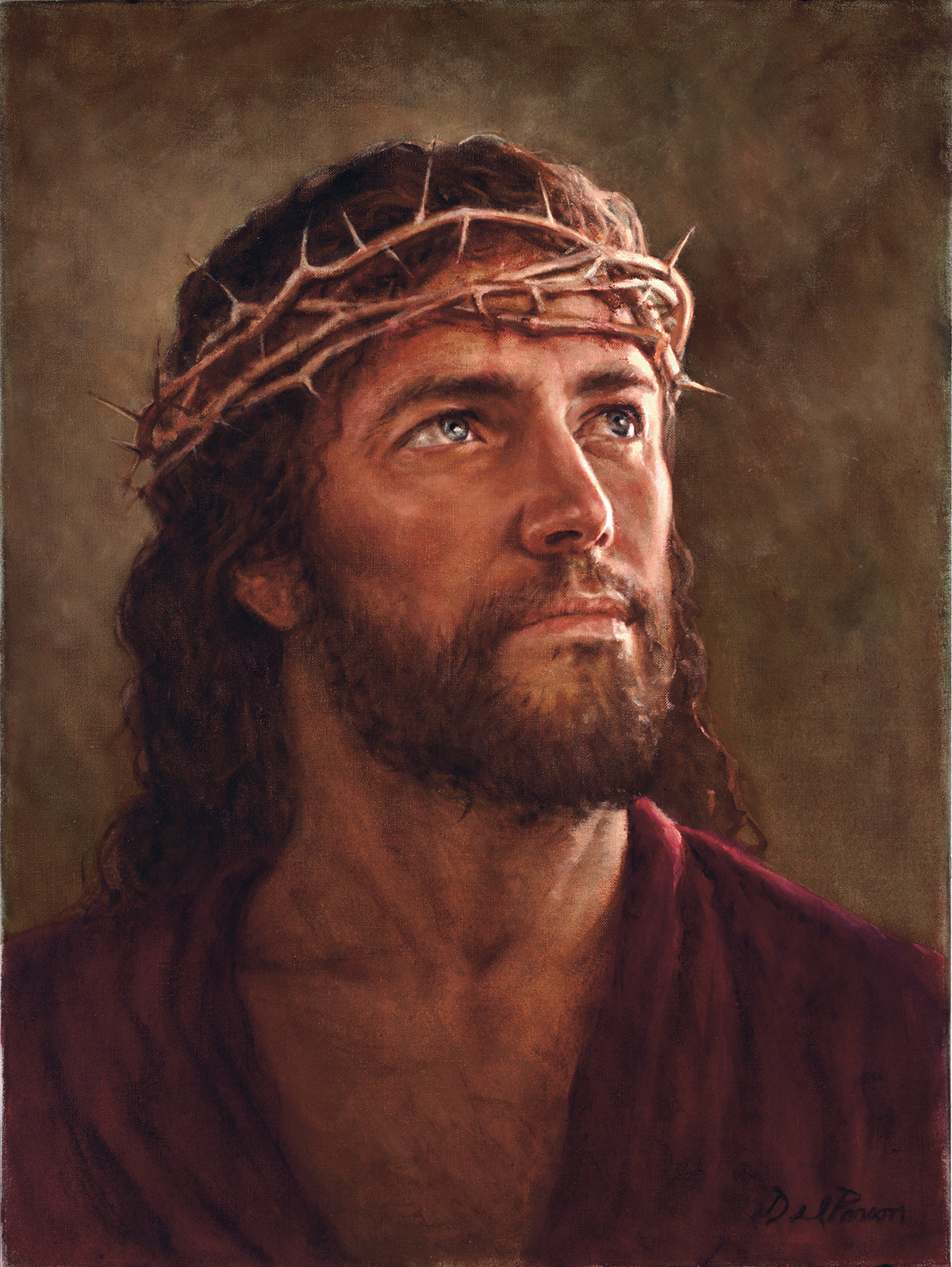
How did you feel when you were told that they took your painting to the temple to talk about it?
A lot of times I didn’t really think about it. With something like this, you’ve been going for a long time on a painting and you just want to have it done, to be honest with you. So that’s where I’m coming from, because I’m just going, “Wow, I need to go ahead and make a living for my family and move on to something else, and it’s just been dragging a long ways,” and so that’s probably the downside. If you take your time and you don’t have to worry about paying the bills, it’d be great, but sometimes you have to worry about other things too. At that time I was just a full-time artist. Now I teach college too, and so I’m not so pressured to make sure I sell so many paintings every month.
But also it’s super fulfilling to see something turn out okay. And if I can get it to where it looks like it really happened—that was part of my goal, a lot of times I just want to paint this and say, “This really happened, so make it look believable that this took place.” And if I can get that kind of feeling, that this is a wonderful, glorious thing, it makes me feel great. I feel wonderful about it. But I’m really trying to be careful not to think about it too much, because then maybe I’m not as teachable as I should be. So I’ve got to be careful in how wonderful I think it is.
Do you ever think a painting is wonderful and then you show it to other people and they feel differently?
Absolutely. To be honest with you, whenever you start a painting, you go, “Boy, this is going to be fantastic.” And then you start painting and it doesn’t take very long before you realize it’s not going to be wonderful—it’s just going to be a painting. And then you keep going down from there, and finally you say, “I just want to solve the main problems in this and it’s done.” I think you have to have that enthusiasm to start with—you think it’s going to be fantastic—but then reality sets in.
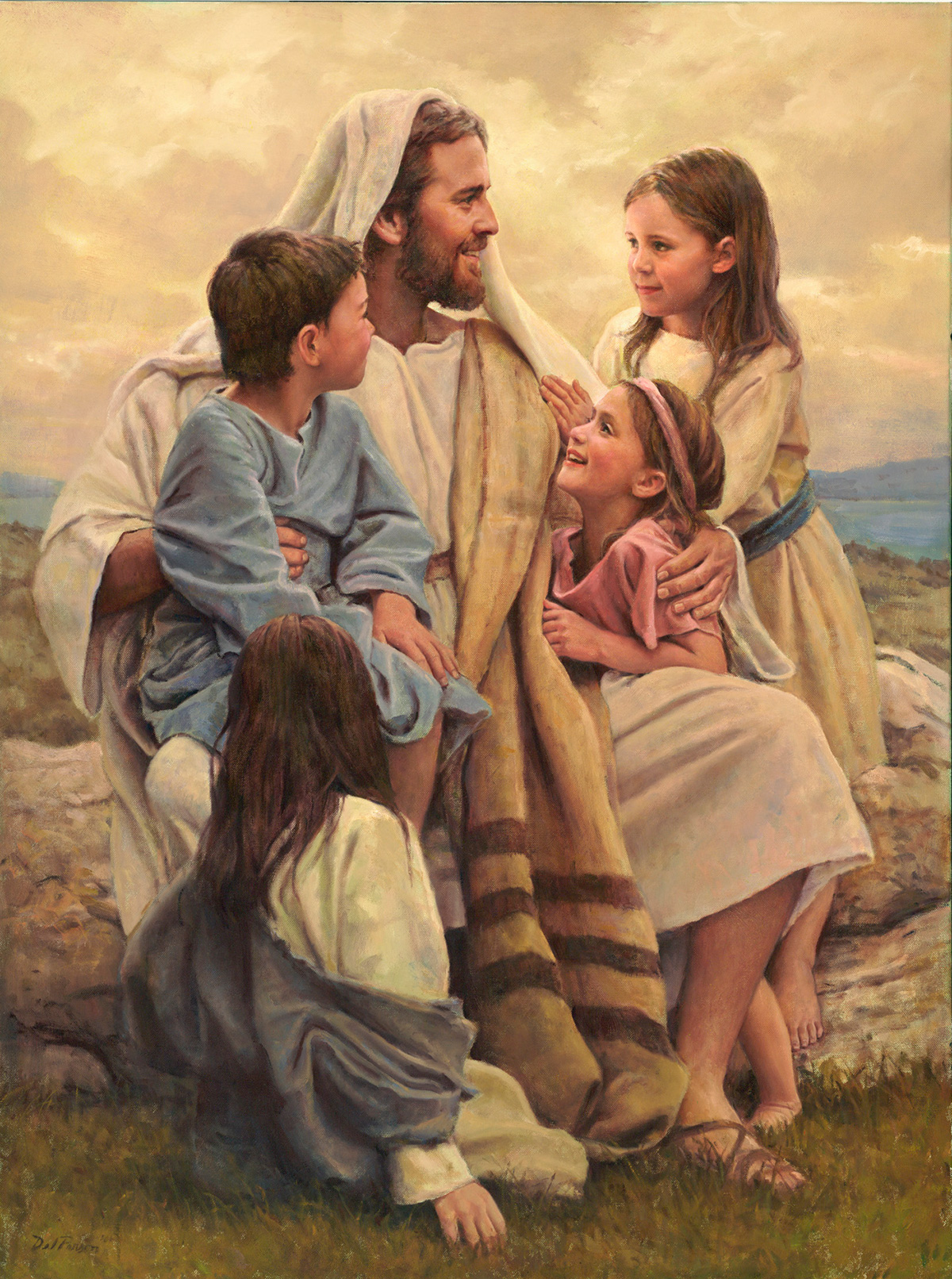
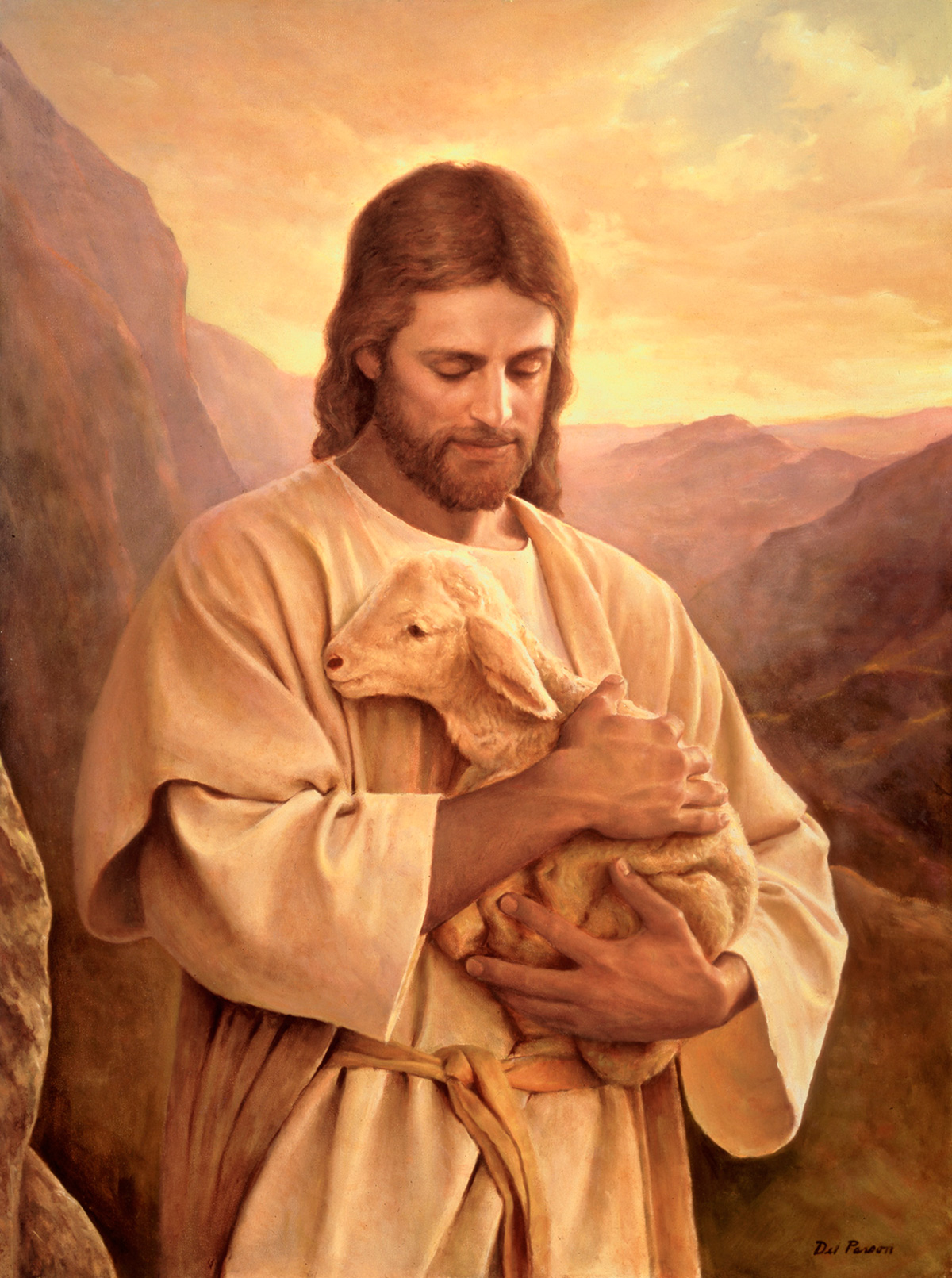
You’ve mentioned that the greatest thing would be to create a painting where when people look at it, they really feel God’s love for them and other people. Which of your paintings comes closest to that for you?
One is a painting of the lost lamb, where Christ is holding a lamb. I really feel like God loves us when I look at that painting. And of course it’s just symbolic—I don’t know if Jesus ever held a lamb—but I think that shows it.
Another one is a painting of Christ with children. He’s smiling and it has a yellow background. I just feel like he really loves those children and he cares about them.
You’ve mentioned that your paintings are kind of a searching. What did you mean by that?
In this life we’re living by faith. When I depict something, for me it kind of puts a reality to it. When I paint it, it becomes more real to me. It sort of puts a face on things. When it’s just in your mind or you hear about it, that’s one thing. But if you’re painting it and you put it together, then you can see it, and there’s something you can touch and you can smell. It’s there.
I also think it’s hard for me to tell a lie when I’m doing a painting—so if I paint it, I kind of have to believe it. If I didn’t believe it, I don’t think I could paint it.
What would you say are some of the things you’ve learned about the Savior from painting him so many times?
My favorite books are the Gospels. I read those all the time to get ideas, and sometimes I think that when I’m painting, if I’ve done the right thing and I’m being inspired, the Holy Ghost can be there, and the Holy Ghost always testifies of Christ.
One time somebody told me, “You must have been friends with Jesus or something, up in the pre-existence.” That sure made me feel good. Then I realized that everybody was friends with Jesus before they came here, weren’t they? Everybody’s got that relationship with him. Everybody knew him and he’s their brother. So the idea when you’re doing a painting is people see it and it brings out their feelings that they already have. And if it goes against their feelings of Jesus, then they don’t like it.
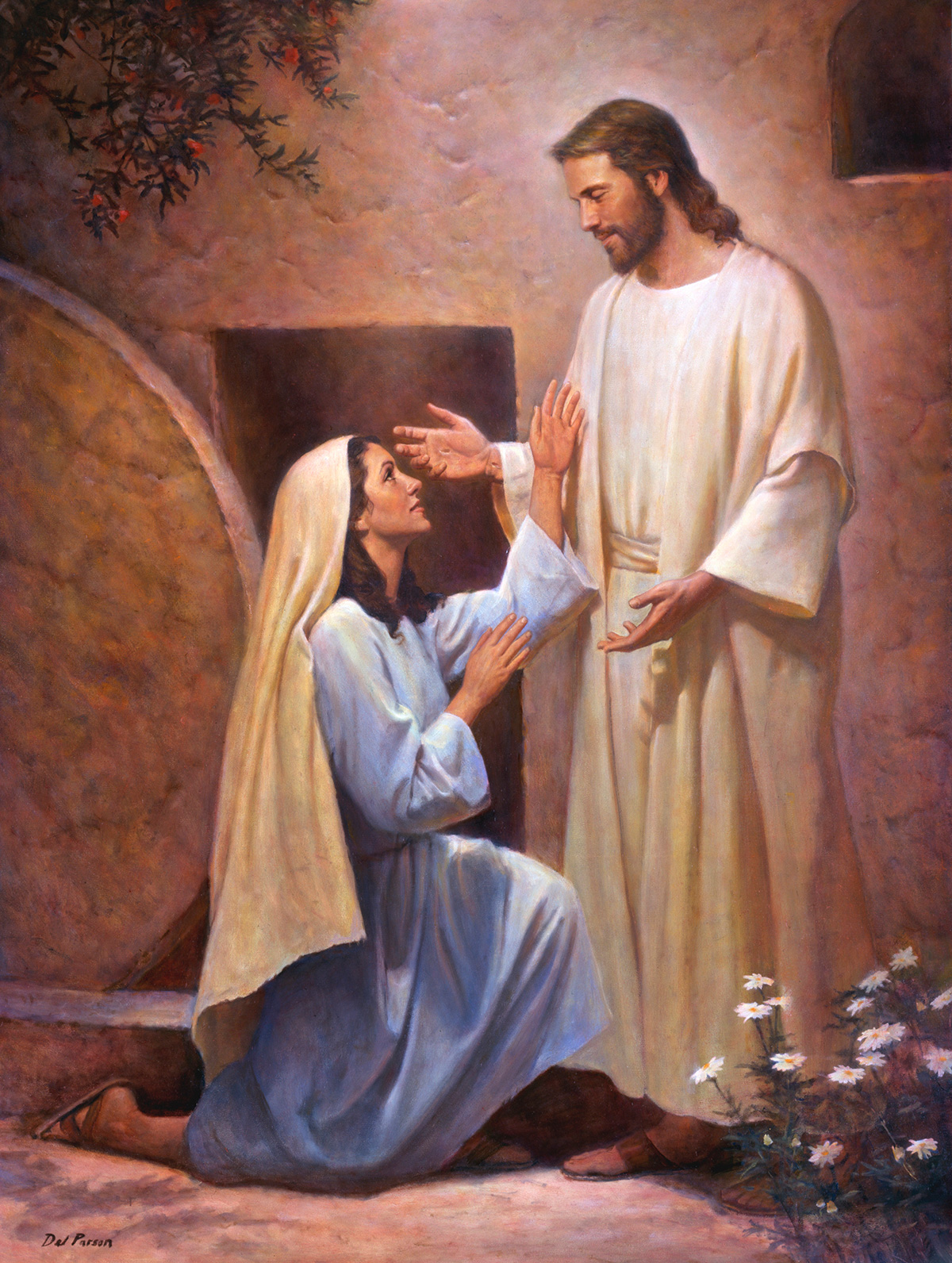
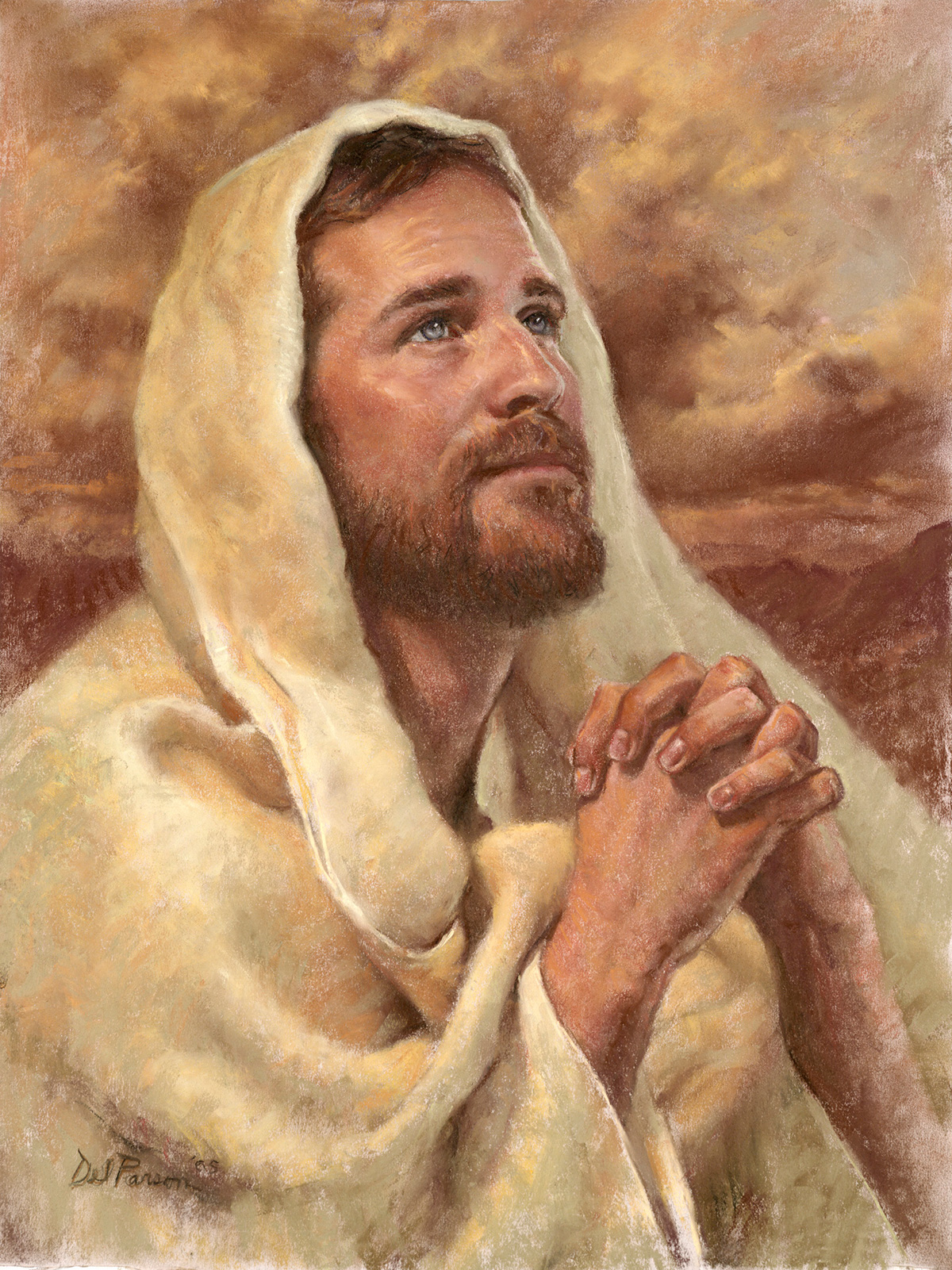
I’m sure you’ve received a lot of feedback about your paintings over the years. What have been some of the most meaningful experiences you’ve had with people responding to your paintings?
I get all kinds of comments, and not all of them are good. I get some negative feedback. If ever it comes and they say, “That doesn’t look like Jesus,” the only thing I can do is paint what I think Jesus is like. So I just do the best I can, and it has to be what I think, since I can’t paint what they think. But I’ve had all kinds of wonderful comments that really make me feel good. People are always telling me things, like where people have had some real tragedy in their life and a painting got them through it. Or, “That painting really helped me turn my life around—when I looked at that painting, it gave me confidence and the desire to change my life.”
After a while they just all kind of come together, and the next thing you start feeling a little too good about yourself and then somebody says, “Boy, that painting just looks too mad,” or something. Or, “Boy, I don’t like that one at all—that’s not my Jesus.” And that’s okay.
But I get a lot of wonderful comments. People are just really nice. And even if they don’t like the painting, they’re usually nice about it.
Are there other artists who have depicted Jesus that you really admire?
Of course there’s Carl Bloch. I don’t know if anybody would not love his paintings. And then there are just some wonderful painters right now—Greg Olsen, Liz Lemon, Joseph Brickey, Kirk Richards, Julie Rogers, Walter Rane.
There are so many artists right now that I think are doing a wonderful job painting. It’s great. I don’t really know if I could name them all, and I think each person gives their own little slant to it. Maybe somebody does such a good feeling of light, or somebody does such a wonderful job with the clothing or the setting. And they each do something that’s just really cool, and so it contributes to the whole.
You have a lot of experience more recently in tutoring younger artists. In general, what advice do you have for aspiring artists?
That’s a tough one. People have told me this: “If you can do anything else, do it.” And the reason is, unless you really love this, don’t do it. It’s just too hard. But I’d probably say that with every single thing that you do. You know, you talk to a doctor and he would say, “Don’t do this unless you love it. It’s so hard.” Talk to a business person and they tell you the same thing.
But I would say that to be successful, you just need to really work hard, and I also think you need to have some talent. It’s mostly work, but if you don’t have any talent and you don’t work hard, it’s not going to be a very fun time being an artist.
I’d also say it would be good to get some really good training or get a mentor who is doing this kind of work. Go see them and talk to them and ask them how they achieved this and what would they suggest on doing this.
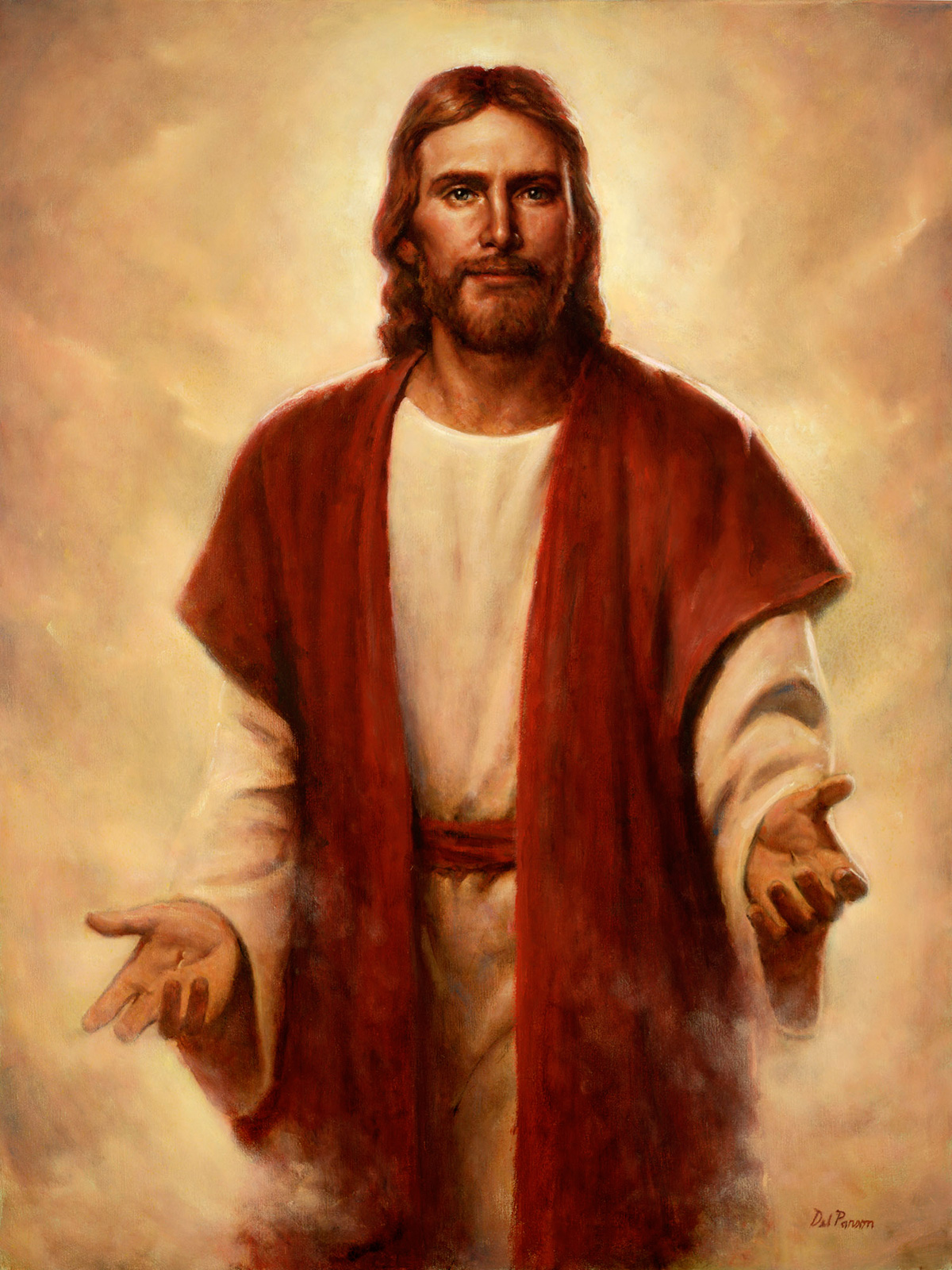
What specifically could they mentor young artists on?
Things like how to get involved with galleries, how to get material to paint, these are the steps you do, these are some galleries that you can put your work in, or this is a show you can put your work in, or these are some possible clients. You could save so much time if you did that than if you’re out there trying to do it on your own.
Say for instance a person wanted to go and be a comic book artist. If they went and talked to an artist who was doing that, they could save years of struggle. And by talking to them, they might decide they don’t want to be a comic book artist. “I don’t really want to spend eighty hours a week in my studio. I just don’t want to do it.”
Pick somebody who’s very successful in whatever you want to do. I don’t think I’d talk to just anybody—I’d talk to somebody who was successful at it.
What advice do you have for aspiring artists who would like to portray Christ?
I would say that you really need to get some skills. I don’t think I painted Jesus for maybe ten years or something painting. Before you paint something, it’s really important to make sure you get some skills at it. Learn your craft. I feel bad about this, but I think it would be terrible doing bad paintings of Jesus. I think it’s a sacred subject and you’ve got to be careful. That’s my opinion on it. You just want to make sure you do the very best you can at it. And if you really love it, I think other people will love it too. ❧
